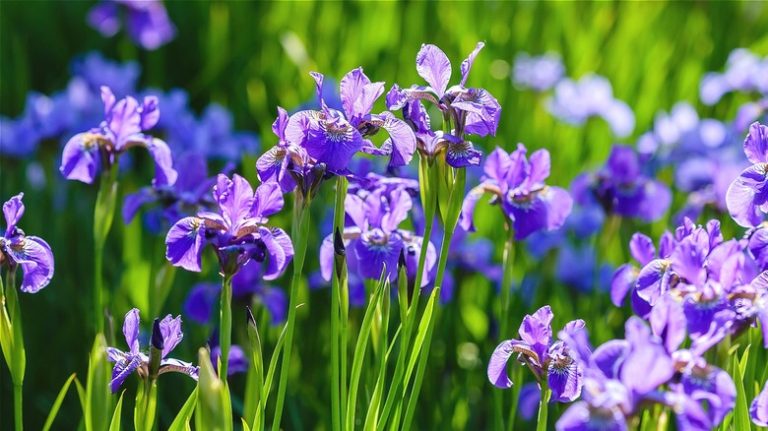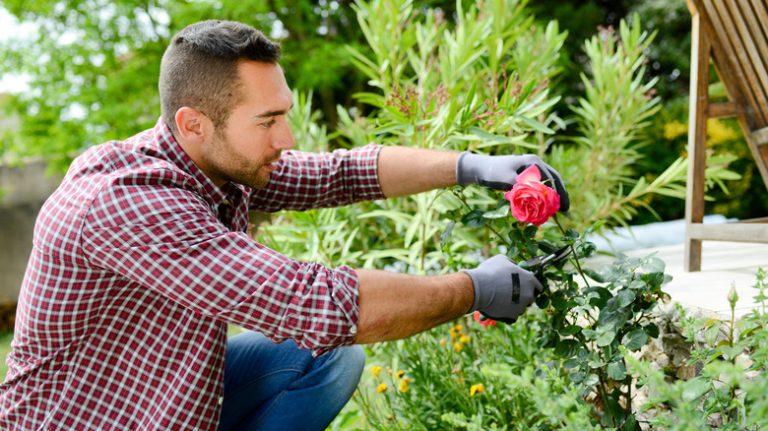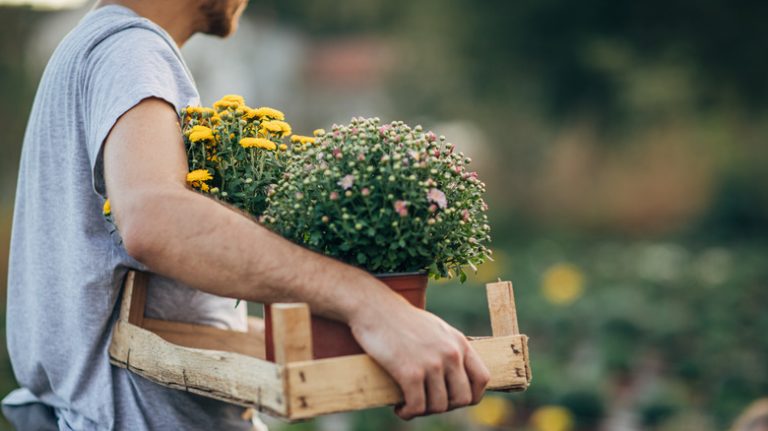Eurybia divaricata, commonly known as white wood aster, is a native North American perennial that belongs to the Asteraceae family. It has a wide distribution throughout the northeastern and north-central regions of the United States and Canada. This hardy plant can grow up to 3 feet in height and has a spread of about 2 feet. It has a clumping form with several stems that rise from a basal rosette of serrated leaves.
The flowers of Eurybia divaricata are small and daisy-like, with white petals and a yellow disk in the center. They bloom in late summer to early fall, attracting pollinators such as bees and butterflies. The plants produce an abundance of flowers that can create a breathtaking display in gardens and landscapes. The flowers are also a valuable nectar source for various pollinators.
White wood asters are incredibly versatile plants that can thrive in a wide range of growing conditions. They are typically found in shaded woodlands, dry rocky soils, and along the edges of forests. They can tolerate both moist and dry soils, making them suitable for a variety of landscapes. They are also known for being resistant to diseases and pests, including mildew.
Eurybia divaricata has a rich history of use in cultural and natural landscapes. It has been used by Native Americans for its medicinal properties, and it is still valued today for its aesthetic and ecological benefits. In addition to their natural beauty, white wood asters are also great for attracting wildlife. The plants provide a food source and habitat for a wide range of insects, birds, and mammals.
White wood asters are easy to grow and propagate. They can be grown from seed, division, or stem cuttings. They prefer partial shade but can tolerate full sun with adequate moisture. They are often used in woodland gardens, perennial borders, and naturalized plantings. They also make excellent cut flowers due to their long blooming period and generous flower production.
There are several cultivars and hybrids of Eurybia divaricata available in nurseries, which offer a wider range of flower colors and forms. Some cultivars have lavender-colored petals, while others have double or larger flowers. These cultivars are selected for their specific traits and can add a unique touch to garden landscapes. When growing white wood asters, it is important to reference a propagation guide or consult with a local reference for proper evaluation and selection.
In summary, Eurybia divaricata, or white wood aster, is a beautiful and hardy perennial that adds color and diversity to gardens and landscapes. Its dainty flowers, serrated leaves, and clumping form make it a popular choice for many gardeners. Whether used as a spiller in containers or a focal point in a garden bed, white wood asters are sure to bring charm and beauty to any space.
White Woodland Aster
The White Woodland Aster, also known as Eurybia divaricata, is a beautiful flowering plant that is native to the woodlands of northeastern North America. Its oval-shaped, serrated leaves give it a unique appearance that is highly sought after by gardeners.
This woodland aster is best grown in shaded areas, such as the edges of woodlands and gardens. It produces attractive white blooms with yellow centers, making it a favorite among flower enthusiasts. The White Woodland Aster is also known for attracting butterflies and other beneficial insects to your garden.
When it comes to cultivation, the White Woodland Aster is quite hardy and can adapt to a wide range of soil types. It prefers moist, well-drained soils but can tolerate drier conditions. This plant is also relatively low-maintenance, requiring little pruning or disease management. Its mounds can be managed through regular pruning to keep it looking neat and compact.
Propagation of the White Woodland Aster can be done through seeds or division. If you’re growing from seeds, sow them in a well-prepared seedbed and tamp them lightly into the soil. For division, divide the clumps in early spring or fall. This will help maintain the plant’s vigor and ensure a healthy growth.
The White Woodland Aster is not prone to many diseases or pests, making it a hassle-free addition to your garden. It is a great choice for natural or woodland plantings and will add a touch of elegance to any landscape.
In conclusion, the White Woodland Aster, or Eurybia divaricata, is a versatile and beautiful plant that can enhance any garden or woodland landscape. Its generous blooming period, attractive foliage, and low maintenance make it a favorite among gardeners. Consider adding this stunning aster to your garden to enjoy its beauty and the wildlife it attracts.
Eurybia divaricata
Eurybia divaricata, also known as White Wood Aster, is a beautiful perennial plant that belongs to the family Asteraceae. It is native to the woodlands of North America and can be found growing in natural, shaded areas.
The stems of Eurybia divaricata are slender and grow in loose, spreading clumps. The oval-shaped leaves have serrated edges, giving them an attractive texture. The foliage is a dark green color, providing a nice contrast to the tiny white blossoms that bloom in late summer to early fall. The flowers have yellow centers and petals that surround the disk in a daisy-like pattern.
One of the benefits of growing Eurybia divaricata is that it attracts pollinators such as butterflies and bees. The plants also produce small, light-colored fruits that contain seeds, which can be helpful for propagating new plants through division or cultivation.
Eurybia divaricata is a low-maintenance plant that is resistant to many common pests and diseases. It can grow in a wide range of soil types, including poor soils, making it a versatile option for many gardeners. The plant is best suited for growing in shaded or partially shaded areas, but it can tolerate some sun as well.
When it comes to managing Eurybia divaricata, there are a few tips to keep in mind. Pruning the plants in early spring can help promote bushier growth and prevent them from becoming leggy. It’s also a good idea to remove any dead or damaged foliage to maintain the plant’s overall appearance.
Popular uses for Eurybia divaricata include using it as a ground cover in woodland gardens or as a filler in mixed flower beds. It can also be used as a spiller in containers or hanging baskets to add a touch of elegance. The flowers of Eurybia divaricata make great cut flowers and can be enjoyed in floral arrangements.
In conclusion, Eurybia divaricata is a versatile and attractive perennial plant that can bring a touch of beauty to any garden. Its low-maintenance nature, beautiful blossoms, and ability to attract pollinators make it a popular choice among gardeners. Whether you are looking for a ground cover or a versatile filler, Eurybia divaricata is definitely worth considering.
Photo credit: Erysimum57, CC BY-SA 4.0
How to Grow and Care for White Wood Asters
White Wood Asters (Eurybia divaricata) are beautiful woodland plants that can add a touch of elegance to your garden. These plants are typically grown for their clusters of white flowers, which bloom in late summer and early fall. If you want to enjoy the beauty of White Wood Asters in your own garden, here are some tips on how to grow and care for them.
Planting
White Wood Asters are typically grown in woodland or shaded gardens. They thrive in well-drained soils and prefer slightly acidic conditions. When planting, select a location that receives partial sunlight and has rich, moist soil. To begin planting, dig a hole that is slightly wider and less deep than the root ball of the aster. Place the plant in the hole and tamp the soil gently around the roots to secure it in place.
Care
White Wood Asters require minimal maintenance once established. These plants are relatively disease and pest-resistant, making them perfect for low-maintenance gardens. However, it is important to keep an eye out for common pests, such as aphids or leafhoppers, and promptly manage them if necessary. Providing the appropriate sunlight and watering them generously will help these asters thrive.
Propagation
If you want to expand your White Wood Aster collection, propagation is a simple way to do so. These plants can be propagated through division or by collecting and planting their seeds. Division should be done in early spring or fall by carefully separating the roots and replanting them in a new location. Collecting seeds from the flower heads in late summer will also allow you to grow new plants the following spring.
Uses
White Wood Asters are versatile plants and can be used in a variety of ways. Their delicate white flowers make them perfect for adding interest and texture to woodland or shaded gardens. They can also be used as a groundcover or a flowering spiller in plantings around the bases and edges of larger plants. Additionally, their compact size and wide growth habit also make them suitable for container gardens and smaller plantings.
Final Thoughts
Growing and caring for White Wood Asters can be a rewarding experience for gardeners. These plants are not only beautiful but also provide benefits to the ecosystem by attracting pollinators and small mammals with their nectar-rich flowers. The versatility and low-maintenance of White Wood Asters make them a great addition to any garden. Whether you choose to grow them for their stunning white blossoms or for their ability to attract wildlife, you’ll find that White Wood Asters are an excellent choice for any gardener.
What You’ll Learn
- A brief overview of the Eurybia divaricata plant and its characteristics
- How the blossoms of Eurybia divaricata attract butterflies and other pollinators
- Tips and tricks for planting Eurybia divaricata in your garden
- The history and evaluation of Eurybia divaricata
- How Eurybia divaricata can be grown in woodlands and dry rocky ground
- Information on the attractive foliage and flower color of Eurybia divaricata
- Managing pests and diseases that may affect Eurybia divaricata
- Propagation methods for Eurybia divaricata
- Recommended cultural practices for optimum growth of Eurybia divaricata
- How to select and care for different cultivars of Eurybia divaricata
- The role of Eurybia divaricata in attracting butterflies and other wildlife
- How Eurybia divaricata can be used effectively in landscapes and gardens
- Tips for maintaining Eurybia divaricata and keeping it healthy
- A quick reference guide for planting and caring for Eurybia divaricata
What Are White Wood Asters
White wood asters, also known as Eurybia divaricata, are attractive flowering plants native to northeastern North America. They belong to the aster family and are typically found growing in dry, rocky soils, often on the edges of forests or in partially shaded areas.
The white wood aster has oval-shaped serrated leaves and produces tiny lavender or white flowers with generous petals. These blossoms attract pollinators such as butterflies and bees, making it an excellent addition to any pollinator garden. The plant typically blooms in late summer to early fall, adding a burst of color to the garden when many other flowers are no longer in bloom.
In terms of cultivation, the white wood aster is a low-maintenance plant that grows quickly. It is best grown in well-drained soils and requires partial sunlight for optimal growth. This plant can grow up to 3 feet in height and can spread to a width of 2-3 feet.
For propagation, the white wood aster can be grown from seeds, which are typically dispersed by mammals or birds. The plant self-seeds readily, allowing it to naturalize in wild areas. It can also be divided in early spring or fall for new plantings.
The white wood aster is known for its tolerance to various soil types and can thrive in both dry and moist conditions. It is less susceptible to diseases and pests, although powdery mildew can occasionally affect the plant.
In terms of uses, white wood asters are often used in wildflower gardens, rock gardens, or as ground cover. Their attractive flowers and low maintenance make them a popular choice for gardeners looking to add a touch of elegance to their landscapes.
Overall, the white wood aster is an attractive and versatile plant that adds beauty and charm to any garden. Its history as a native North American wildflower, along with its easy care and generous blooms, make it a delightful choice for both experienced and novice gardeners.


